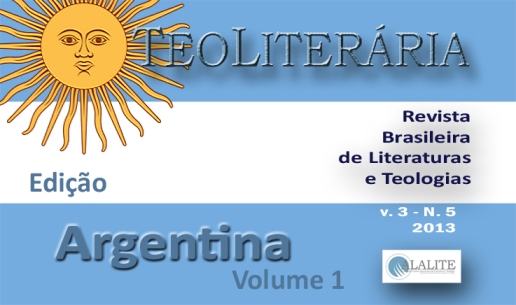The symblic o the Evil in Ricardo Herrera’s Poetry
DOI:
https://doi.org/10.19143/2236-9937.2016v3n5p111-120Abstract
With the complete works of the argentine poet Ricardo Herrera (1949 -), we will assume his expressions, figures and images around the Garden of Gethsemane. His allusions to the agony of thirst and desire call a meeting with the beloved other. Love of yesterday, or in the present, but always longed to the point of pain and sweat of blood.Ricoeur reflects on this triple symbiosis in which figure, experience and expression are combined to understand and create meaning from the cosmic, psychological and poetic functions of symbols. The herb has the gift / to approach the riddle, says Herrera, because “the symbols, Ricoeur adds, only come to language according that elements of the world are made transparent.”We could not approach to expressions Gethsemane, orchard, olive trees, if they had no cosmic force in themselves. The strength of the primary reminiscent of the real world, raises the dreamlike suggestions that flow into the poem. These demonstrative intentions significant how Herrera used the symbol to express their experience and at the same time, how poetic realization of this figure helps us to reinterpret the world.
Key words: Poetry, hermeneutics, Paul Ricoeur, Gethsemane´s Symbol.
Downloads
Published
2013-07-31
How to Cite
Fanuele, H. P. (2013). The symblic o the Evil in Ricardo Herrera’s Poetry. TEOLITERARIA - Revista De Literaturas E Teologias, 3(5), 111–120. https://doi.org/10.19143/2236-9937.2016v3n5p111-120
Issue
Section
Artigos Temáticos


